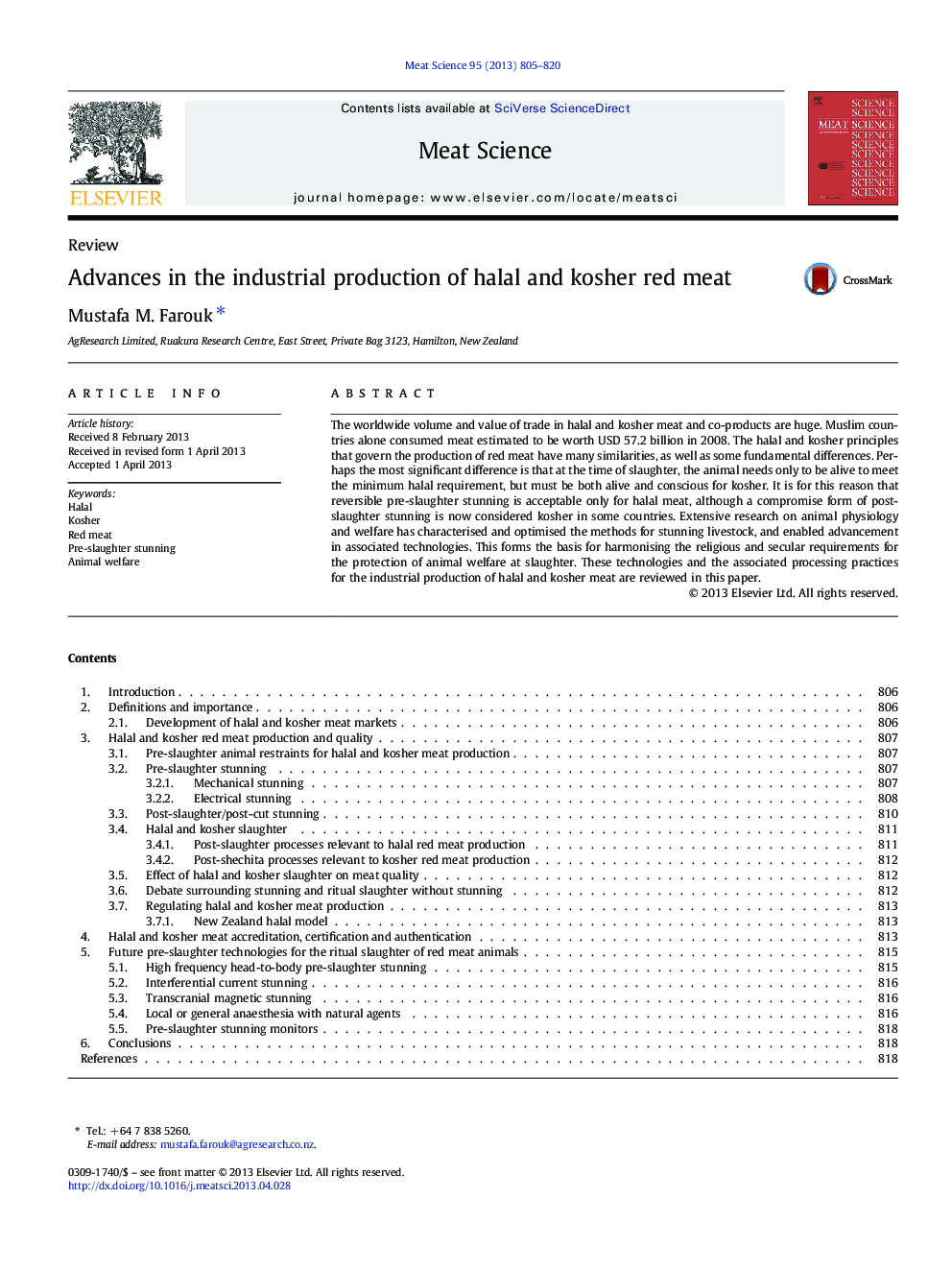| Article ID | Journal | Published Year | Pages | File Type |
|---|---|---|---|---|
| 5792128 | Meat Science | 2013 | 16 Pages |
The worldwide volume and value of trade in halal and kosher meat and co-products are huge. Muslim countries alone consumed meat estimated to be worth USD 57.2Â billion in 2008. The halal and kosher principles that govern the production of red meat have many similarities, as well as some fundamental differences. Perhaps the most significant difference is that at the time of slaughter, the animal needs only to be alive to meet the minimum halal requirement, but must be both alive and conscious for kosher. It is for this reason that reversible pre-slaughter stunning is acceptable only for halal meat, although a compromise form of post-slaughter stunning is now considered kosher in some countries. Extensive research on animal physiology and welfare has characterised and optimised the methods for stunning livestock, and enabled advancement in associated technologies. This forms the basis for harmonising the religious and secular requirements for the protection of animal welfare at slaughter. These technologies and the associated processing practices for the industrial production of halal and kosher meat are reviewed in this paper.
